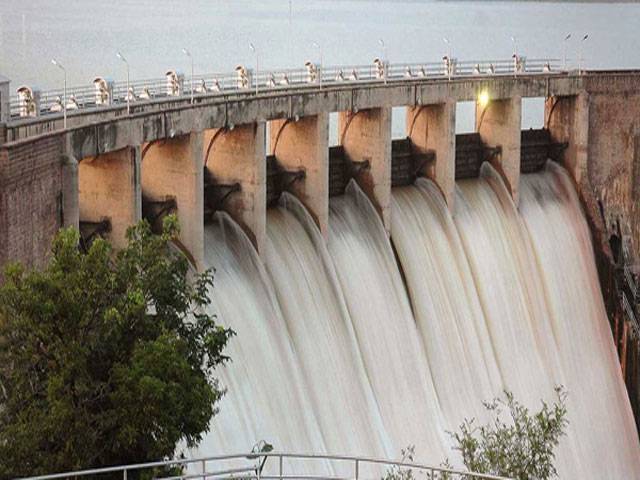Islamabad - Struggling to break free from the civic problems arising out of the mismanagement and poor planning on part of Capital Development Authority, the residential colonies in the area of Bhara Kahu are also a source of pollution to Rawal Dam — the major water resource of the garrison city.
Bhara Kahu — an area situated on the outskirts of Islamabad along the main road leading to Murree and Azad Jammu & Kashmir — is facing multiple problems, thanks to the negligence and indifference on part of the district administration. If one sees flying dust, heaps of garbage, traffic jams and encroachments, one needs not ask someone where one is; it is Bhara Kahu for sure.
These problems are the hallmarks of the locality with the residents hoping no immediate relief from the political leadership of the area.
There are over 25 major housing colonies in the area and the waste from these colonies spills into Rawal Dam and the residents of Rawalpindi are left with no choice but to drink the filthy and stinking water, reveals a survey by The Nation.
The dam falls in the territorial limits of the Capital Development Authority (CDA) but its water is supplied to Rawalpindi. The CDA is responsible for keeping a check on waste water entering the dam.
Muhammad Shoaib of Haq Bahu Sanitary Store at Bhara Kahu said the locality lacks proper drainage system and hospital. He expressed concern over the colonies causing pollution to Rawal Dam. He said garbage and waste from poultry farms runs into the lake which is main cause of polluting Rawal Dam. He said more than 170 poultry farms are located in this area.
He termed encroachments as a major cause of nuisance for the shopkeepers and pedestrians. He said traffic accidents were a routine due to the absence of overhead bridge at the main square. He lamented that political leadership did nothing to resolve the problems faced by the general public.
Talking to The Nation, President Anjuman Taajraan (traders’ association) Simly Dam Road, Raja Zahid Dhanyal said the residents of the locality are facing a lot of problems including poor sanitation, encroachments and traffic jams. He said there are around 1500 shops along Simli Dam Road but same number of pushcarts and stalls are really a nuisance for the pedestrians and shopkeepers.
Officials from CDA enforcement directorate turn up once a year, he complained.
When asked, a traffic warden on duty at the square said a new road is direly needed to bypass Bhara Kahu when it comes to access to Murree and other AJK areas. He told this correspondent the government has approved the bypass road starting from Shahdara but no construction work has been started yet.
He said though the Murree Road has been made one-way by dividers, pedestrians are always seen jumping over the dividers, which causes traffic blockade and accidents.
Mushtaq Ahmad, who runs a mobile phone shop at Bhara Kahu-Simly Dam Chowk, complained of poor traffic management.
He said that on every Wednesday, the traders face a painful traffic jam due to ‘Wednesday Bazaar’ at the Simly Dam Road. “There is no proper parking place along the roadside,” he added. He was of the view that elected leadership of the area should have done more to mitigate the sufferings of the people.
The colonies which are causing pollution to the dam include Atomic Energy Employees Cooperative Housing Colony, OGDC Housing Colony, Country Residencia Apartments, Godha Gali, Tret village, Salgran village, Bidhawa village, Madina Town, Al Noor Colony, Lakhwal village, Dhoke Jilani, Shahdra, PTV Housing Colony, Belgium Town, Margalla View Housing Colony, Snober village, Najaf Colony, Judicial Colony Chattar, Bani Gala Town, Bhara Kahu, Bari Imam/Noorpur Shahan, Quaid-i-Azam University and Diplomatic Enclave. The colonies are located in the jurisdiction of CDA, Islamabad Capital Territory and Tehsil Municipal Administration Murree.
According to an official report, over five million gallons of sewage is dumped daily from several sources into Rawal Dam. Rawalpindi has only one biggest resource of water i.e. Rawal Dam. According to this report, the Rawal Lake is receiving waste water from a catchment area spread across 70,000 acres and included both Islamabad Capital Territory and non-Islamabad Capital Territory.
The ICT Zoning Regulations 1992 forbid any construction in areas adjoining all water bodies, lakes and reservoirs in the capital’s Zone-III, which includes the Margallah Hills National Park and areas situated south of it until the Murree Road.
The MNA elected from the area, Tariq Fazal Chaudhary of PML-N could not be reached out for his comments despite repeated attempts.
Saturday, April 20, 2024
No end in sight to control Rawal Dam pollution
Civic problems aplenty in Bhara Kahu

22 suspects arrested
April 20, 2024
RCCI chief for promoting law-abiding culture
April 20, 2024
Provision of quality education govt’s priority: KP minister
April 20, 2024
A Tense Neighbourhood
April 19, 2024
Dubai Underwater
April 19, 2024
X Debate Continues
April 19, 2024
Hepatitis Challenge
April 18, 2024
IMF Predictions
April 18, 2024
Kite tragedy
April 19, 2024
Discipline dilemma
April 19, 2024
Urgent plea
April 19, 2024
Justice denied
April 18, 2024
AI dilemmas unveiled
April 18, 2024
ePaper - Nawaiwaqt
Advertisement
Nawaiwaqt Group | Copyright © 2024





